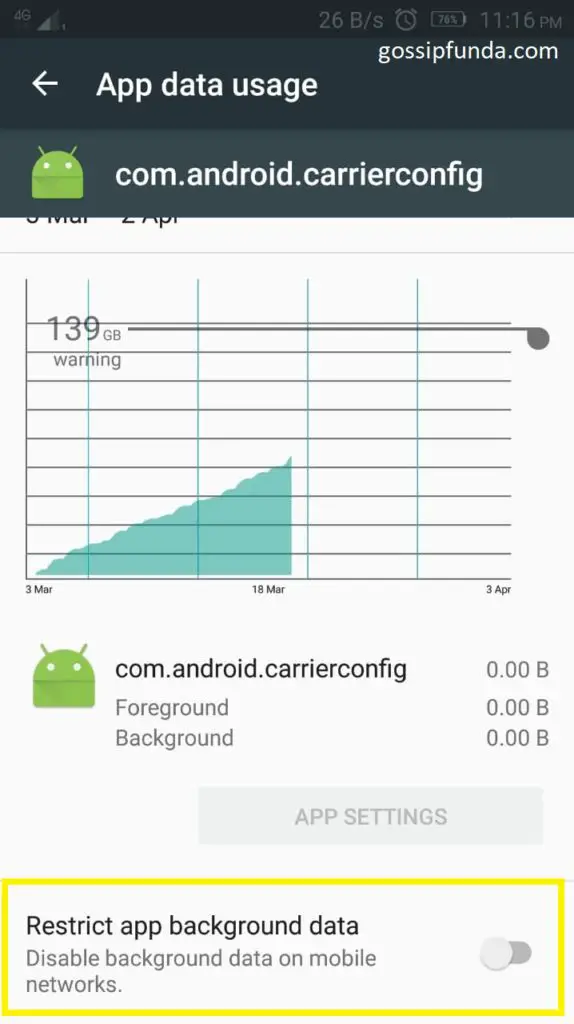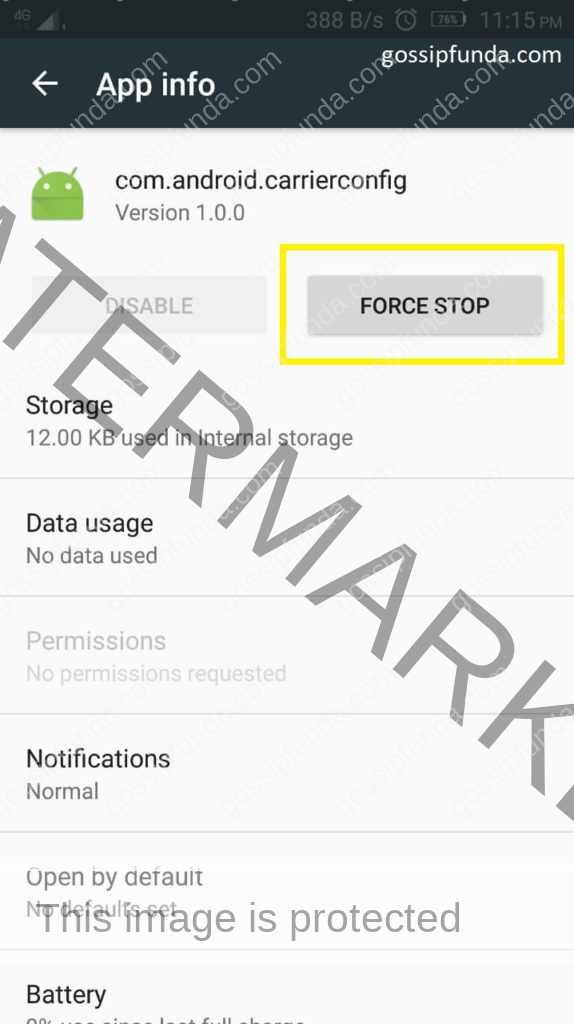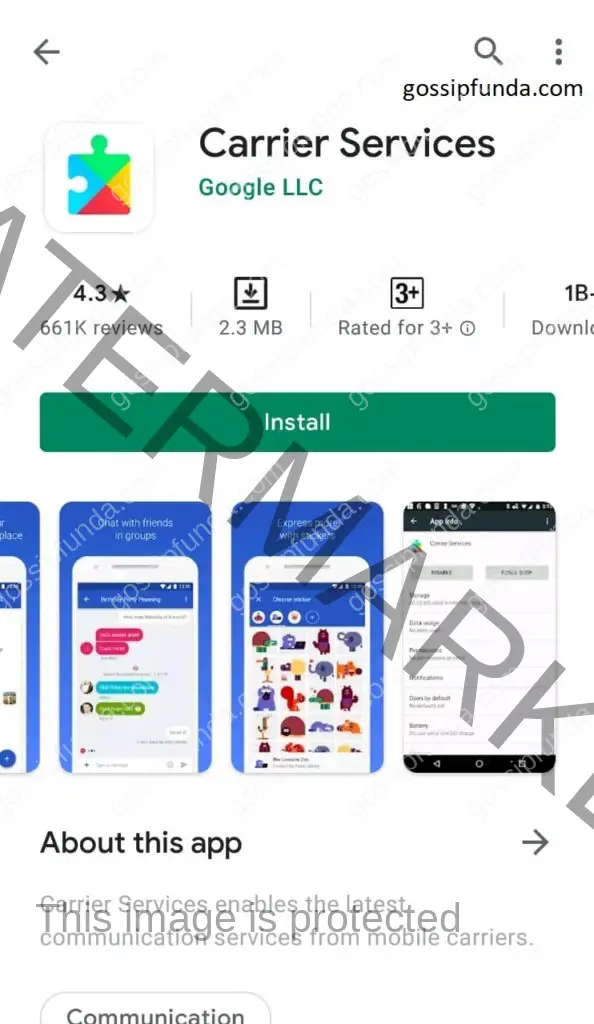So today I am going to talk about com.android.carrierconfig, quite sure you must have seen this application running in the background and wondered what it is? How does it prove to be helpful for your android device? Thought of deleting it? What will happen if you force-stop it? Should you install it explicitly? So, let’s get into the topic as I have addressed the solutions to these doubts.
Before that let us deeply understand why we need carrier configuration in our device and the reason is carrier framework is a media communications system that sends and receives data in the form of voice calls, video calls and on the other side configuring them means dispositioning of sections or components in a specified structure, figure or composite.
Think of it as a medium to communicate with others through your phone and for things to work out properly you need to have some sort of composition to be made by the system and that is the reason why we have pre-installed applications or services that help your system to run smoothly.
Lear more: com.samsung.android.incallui
What is com.android.carrierconfig?
At whatever point you see a converse space plot like “com.android.xxxx” it implies that that is an individual bundle – an Android application. They utilize a reverse area name as a special identifier. All applications including iOS applications have one.
carrierconfig is a preinstalled application that is incorporated in android 6.0 and above versions. This application provides a carrier explicit structure.
It has the competence to actively offer carrier configuration to the system with the help of a specified interface. The assurance of what esteems to return is totally up to the transporter application and can be dynamic dependent on point-by-point data passed to the application through the android system.
The assurance of what values to return is altogether up to the carrier application and can be dynamic dependent on definite data passed to the application through the android system.
Do not miss: com.android.backupconfirm
Working of com android carrierconfig
The carrier design provided by this element is a bunch of key-value combines that are responsible for modifying different communication-related actions in the android system.
The arrangement of qualities for a specific gadget is controlled by questioning the accompanying segments altogether:
- The system config application is packaged with the framework picture.
- Comparable to the conduct preceding Android 6.0 some default values are codified.
Carrierconfig provides voLTE/IMS arrangements, voicemail, roaming and non roaming network services, etc.
Information that is transmitted to the carrier application include:
- Service provider name
- Mobile country code
- Mobile network code
- International mobile Subscriber identity and many more.
Where to find com.android.carrierconfig:
Go to Settings > Apps > System Apps.
There if you scroll down you will find an application named “com.android.carrierconfig“, if you open it you will see many options and you can also disable or force stop the application.

Can you disable com android carrierconfig:
No, you cannot disable it however you can still force stop it, but doing so may result in some sort of misconduct in your system. And as it is seen that completely stopping an application can have drastic effects as compared to disabling it because you can again choose to enable the application when you feel to do so. But since this option isn’t enabled by the system there’s nothing more you can do.
For instance, if you are using any third-party software for telecommunication then you can freely force stop the carrierconfig but if you are dependent on the systems inbuilt application, stopping it will cause you a problem.
However, there is an option provided by the application, located inside the data usage option which can turn on/off to restrict app background data. SO you can try doing that if you don’t want to use this application or restrict it from using your background data.

Fixing the “com.android.carrierconfig stopped working” error
Firstly, try clearing the cache and data and force stop the application.
To do so open the com.android.carrierconfig application > click on Storage > click on clear data and clear cache.

Go back and click on force stop option. Now again try restarting the application.

Explicitly installing carrier services
If you don’t have com.android.carrierconfig pre-installed on your device you can even install it from the play store by searching the “carrier services”, this application is from google. The working of inbuilt carrierconfig and google carrierconfig is considerably different. The google carrier services empower the most recent correspondence administrations from versatile carriers, including battery-advancements and backing for upgraded highlights in the Android Messages application. A nonexclusive system config application is packaged with the framework image. This application can supply values for any factors that the customary carrier application doesn’t.

Code of com.android.carrierconfig
package com.android.carrierconfig;
import android.content.Context;
import android.os.Build;
import android.os.PersistableBundle;
import android.service.carrier.CarrierIdentifier;
import android.service.carrier.CarrierService;
import android.telephony.CarrierConfigManager;
import android.telephony.TelephonyManager;
import android.util.Log;
import org.xmlpull.v1.XmlPullParser;
import org.xmlpull.v1.XmlPullParserException;
import org.xmlpull.v1.XmlPullParserFactory;
import java.io.File;
import java.io.FileOutputStream;
import java.io.IOException;
import java.io.InputStream;
import java.util.HashMap;
import com.android.internal.util.FastXmlSerializer;
//Gives network supersedes to carrier arrangement.
public class CarrierConfigService extends CarrierService { //The design accessible through CarrierConfigManager is a mix of default values
private static final String CCS = "CarrierConfigService";
private XmlPullParserFactory mFactory;
public CarrierConfigService() {
Log.d(CCS, "Service created");
mFactory = null;
}
//PersistableBundle is returned
//carrierconfig pack for a given network by analyzing data from files in the assets folder is returned.
@Override
public PersistableBundle onLoadConfig(CarrierIdentifier id) {
Log.d(CCS, "Config is retrieved");
if (id == null) {
return null;
}
PersistableBundle config = null;
try {
synchronized (this) {
if (mFactory == null) {
mFactory = XmlPullParserFactory.newInstance();
}
}
XmlPullParser parser = mFactory.newPullParser();
String fileName = "carrier_config_" + id.getMcc() + id.getMnc() + ".xml";
parser.setInput(getApplicationContext().getAssets().open(fileName), "utf-8");
config = readConfigFromXml(parser, id);
}
catch (IOException | XmlPullParserException e) {
Log.d(CCS, e.toString());
// empty config returned for unknown networks.
config = new PersistableBundle();
}
//Process vendor.xml as though it were attached to the transporter config record we read.
XmlPullParser vendorInput = getApplicationContext().getResources().getXml(R.xml.vendor);
try {
PersistableBundle vendorConfig = readConfigFromXml(vendorInput, id);
config.putAll(vendorConfig);
}
catch (IOException | XmlPullParserException e) {
Log.e(CCS, e.toString());
}
return config;
}
// XML document parsed and a PersistableBundle returned.
static PersistableBundle readConfigFromXml(XmlPullParser parser, CarrierIdentifier id)
throws IOException, XmlPullParserException {
PersistableBundle config = new PersistableBundle();
if (parser == null) {
return config;
}
// Repeat over each <carrier_config> hub in the archive and add it to the returned, pack if its filters match.
int event;
while (((event = parser.next()) != XmlPullParser.END_DOCUMENT)) {
if (event == XmlPullParser.START_CCS && "carrier_config".equals(parser.getName())) {
// If no filters match skip this.
if (!checkFilters(parser, id)) {
continue;
}
PersistableBundle configFragment = PersistableBundle.restoreFromXml(parser);
config.putAll(configFragment);
}
}
return config;
}
static boolean Filterchecks(XmlPullParser parser, CarrierIdentifier id) {
boolean res=true;
for (int i=0; i<parser.getAttributeCount(); ++i)
{
String attri= parser.getAttributeName(i);
String value = parser.getAttributeValue(i);
switch (attri) {
case "mcc":
res=res && value.equals(id.getMcc());
break;
case "mnc":
res=res && value.equals(id.getMnc());
break;
case "spn":
res=res && value.equals(id.getSpn());
break;
case "gid1":
res=res && value.equals(id.getGid1());
break;
case "gid2":
res=res && value.equals(id.getGid2());
break;
case "device":
res=res && value.equals(Build.DEVICE);
break;
default:
Log.e(CCS, "Unknown attribute "+attri+"="+ value);
res=false;
break;
}
}
return res;
}
}
Conclusion:
For telecommunication, it is necessary to have some pre-installed applications like “com.android.carrierconfig” which I have discussed in detail and covered every possible topic related to it and even shared the code of this application. And how carrier services can be considered as an alternative for this generic application.

Myself Purva Rumde, a 19-year-old enthusiast who loves to write and learn new skills so that I continue to stay in this technical loop. I am a diploma in Information technology and currently, I am pursuing B.E in IT. I am intrigued by the cybersecurity domain.
I have read somewhere what you learn in any field could probably translate into some helpful skill as a technical writer. As the future is all about advancing technologies and as a technical writer, I have the opportunity to reach thousands of eyes.
People think writing is too monotonous but no if you truly understand how your words can help someone then there’s no greater happiness than this, so my only motto is to learn continuously, test everything, experiment with new things, and stay humble.


